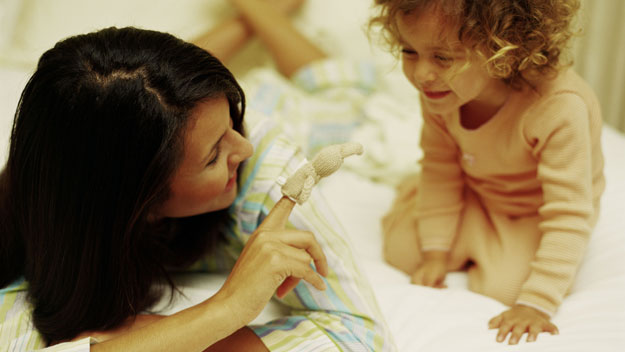With mere days until we wind forward the clocks and welcome daylight savings for another six months, panic is probably beginning to set in for those who like to catch their zzz’s.
While adapting to the new schedule is not too tough for us adults, for babies and children the impact can be a little more dramatic.
And let’s face it, if baby isn’t sleeping, nobody is sleeping.
So we spoke with sleep expert Dr Carmel Harrington about how to best navigate the coming weeks while we get those sleep patterns back to normal, and asked just how it was that one hour could make such a huge difference.
“Because we’re moving our body clock a whole hour overnight, our circadian rhythms that have been set up according to our body clock are forced to change,” explains Dr Harrington, who is an A.H Beard sleep expert.
“It’s worse when springing forward in spring time, because we have to force ourselves to get up earlier. When we fall back in autumn it can sort of feel as if you’re getting a bit of a sleep in, but this time can be really difficult for children who naturally wake up earlier.”
While it doesn’t seem like an hour could make that much difference, when most of us aren’t getting quite enough sleep already, an hour deficit can have a huge impact, particularly on little ones.
“Changes in daylight savings really impact children,” agrees Dr Harrington.
“Their body clocks are set, and now we’re asking them to fall asleep a whole hour earlier or later- the same with waking up.
“When the end of daylight savings rolls around in April it can be really hard for children to adjust to the later mornings. They’ll want to wake up with the sun, so parents will have to make sure that they’re changing bedtime and putting their children to bed at the appropriate time.”

Sleep expert Dr Carmel Harrington shares her tips on surviving the tricky sleep situation when the clocks change. Image: Supplied.
When you and the kids are running on little sleep, it can feel like nothing is going to work, but Dr Harrington says a little bit of planning can go a long way in making the daylight savings transition go a little smoother.
“What parents have to do at this time of year (it depends whether you’re falling back of going forward with the time change) is to get their children to go to sleep a little bit later and wake up a little bit later,” she suggests.
WATCH: How To Get A Better Night’s Sleep Using Your Phone. Continues after video …
“This can be hard because children don’t understand what’s going on, and their body clocks will fight the change in routine,” Dr Harrington said.
“At the end of daylight savings in autumn, parents should start preparing their children by gradually changing their sleep time by 15 minutes, encouraging them to go to bed a little bit later every night.
“This means that once the clocks tick over their body clocks will have adjusted and the change won’t be such a shock.
“As adults we should do the same thing!”
These two products could save your sleep

A couple of smart buys could come in handy when it’s time to change the clock.
(Credit: Supplied)It can be tricky to create a snoozy sleeping environment when there is too much light flooding in. This portable blackout blind has Velcro fastenings which allow it to be put up in place on a window.
The Groclock uses fun images of the stars and sun to communicate for children aged two years and up to know when to go back to sleep and when it’s time to spring out of bed.
Sleep expert Dr. Harvey Karp shares his top five tips to getting your little ones ready for daylight savings
Sleep train in advance – For the nights leading up to daylight savings, swaddle your baby, turn on rough white noise as loud as a shower and let themfall asleep in your arms. BUT, right after you slide your little one into bed, rouse them until their eyes open (tickle her neck, scratch her feet, etc). After a few seconds they will close their eyes again slide back into slumberland. This technique is called “wake and sleep”, because when you gently place your sleeping baby down for naps or at night you need to wake her up… just a little. A common myth that leads to sleep problems is that you should never wake a sleeping baby. However, this is a great way to help babies develop the skill to fall asleep on their own.
Dim the lights – When daylight savings ends, your bub will likely wake around 5am instead of 6am due to the sun rising earlier (which isn’t good news for you). Close the blinds and do anything you can to darken the space, helping create the illusion of nighttime and reducing the chances of your baby being woken by the early morning sun.
Adjust the schedule prior – You don’t need to wait until the night before to start changing your child’s routine. Four days before the end of Daylight Saving Time, delay dinner and bedtime by 15 minutes, again two days later, again when the clocks change, and one final time two days after that. However, there’s no need to shift naps; those will adjust naturally.
Use white noise – REM sleep gets lighter as you approach the morning, meaning babies are awoken easier by environmental factors such as room temperature, noise, light, and hunger. The result of the time change is that babies often wake up one sleep cycle earlier. In the womb, infants have a sound that is louder than a vacuum cleaner 24/7. So to be in a silent room is bizarre beyond belief for them. The sound in the womb is very low and rumbly because babies are underwater and water filters out the high-pitch sounds. In the nights leading up to daylight savings, play low pitch sounds — like the sound of rain on the roof — throughout the night.
Don’t be afraid of fast movement – Five to 10% of babies don’t respond to white noise and swaddling. In those cases, they need to sleep in a fully reclined swing moving at the fast speed.
Tips courtesy of infant sleep expert and author of Happiest Baby On The Block, Dr. Harvey Karp



